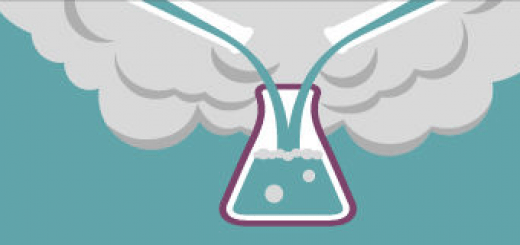Difficult Discussions: From Conflict to Constructive Conversation

Imagine this: you’re teaching a class when student conversation suddenly shifts to a hot-button issue. Now voices are raised, emotions are high, and you’re left deciding how to handle the situation.
This can happen for a multitude of reasons. Perhaps a student made an offhand remark, or course content touched on a controversial subject, or current events sparked a debate. Regardless of the reason, your reaction can shape the direction of the conversation. You can steer students into an effective discussion, or disagreements can devolve into chaos.
College classrooms should be spaces where students can practice respectful dialogue, even when they disagree; however, this requires intentionality and openness from the instructor. While these conversations won’t go perfectly every time, here are a few steps you can take to steer your students into productive, respectful dialogue:
Step 1: Be Prepared
Your ability to navigate this type of conversation depends on your preparation. Preparation starts with self-reflection; it’s important to understand what you bring to the conversation – your beliefs and biases. Understand what topics might trigger a heightened emotional response in yourself by working through the “Hot Moments Catalysts & Reactions” resource from the University of Michigan’s Ginsberg Center.
After self-reflection, it’s time to arm yourself with strategies. The Ginsberg Center’s Promoting Democracy series offers “Strategies for Responding to Hot Moments,” a resource full of specific and actionable strategies for instructors. While most of the strategies focus on in-the-moment responses, the authors include ways to follow up outside of the classroom as well.
We also recommend exploring the “Getting Ready to Dialogue” resource created by the University of Pennsylvania’s Paideia Program. This primer is great for students and faculty, so feel free to share with both colleagues and classes! The handout begins with a self-reflection section, then offers general strategies and more specific scripts for dialogue. This includes scripts to diffuse tension, seek clarification, and challenge harmful statements.
One of our favorite recommendations from this resource? “Be Curious.” Don’t jump to assumptions about what others are thinking or feeling – ask questions to get a better understanding and be open to hearing new perspectives.
Step 2: Keep It Relevant
Dialogues should advance the learning goals for your course. If they don’t, feel free to redirect to the content at hand.
The 1940 Statement of Principles on Academic Freedom and Tenure states “Teachers are entitled to freedom in the classroom in discussing their subject, but they should be careful not to introduce into their teaching controversial matter which has no relation to their subject,” (American Association of University Professors). Don’t start a difficult discussion for the sake of a difficult discussion; keep classroom dialogues related to your course content.
Step 3: Share the Purpose
When you decide to incorporate classroom discussion on a hot topic, make sure you explain why the conversation is relevant. Be open with students about how and why the conversation will advance their learning in the course. Be explicit about your goals; even if your intentions are good, your purpose can be misconstrued if your goals are left ambiguous. We have two recommendations for this:
First, focus on skill building.
Let students know they are building valuable communication and career skills through the exercise. Even dialogues that aren’t about sensitive topics can build conversational skills, but it’s particularly important for students to learn how to handle their words and actions when engaging with a topic of disagreement. You can also share with students the differences between debate, discussion, and dialogue using this resource from the Crossroads Civic Engagement Center at the University of Alabama.
Next, connect to what matters.
If you’re interested in promoting meaningful dialogue in your classroom, explore how the course content connects to social issues. This can do more than spark conversation; it can also increase students’ intrinsic motivation to learn the content. Explore our “Transformative Teaching with Sustainability” resource for more ideas about how to connect course content to local and global problems.
Step 4: Establish Ground Rules
You can establish ground rules even if you don’t plan on incorporating difficult conversations into your course. We recommend reading Joy C. Mapaye’s chapter “Responding to a Class Crisis” for an example of how an established classroom code of conduct – and a cool head – allowed Mapaye to respond to an inappropriate discussion post (Landis, 2008, p. 130).
If you do intend to incorporate meaningful dialogue into your course, check out the “Guidelines for Dialogue” by the Difficult Dialogues National Resource Center. These guidelines create expectations for how a group will engage with one another. Every item on the list is useful, but we particularly like:
challenge the idea, not the person.”
It’s okay to disagree, but it’s not okay to attack or demean others. We can be kind to individuals and tough on systems at the same time.
Additional Notes
Remember that each situation is different, and following these steps won’t guarantee a pleasant conversation every time. As Nash, Bradley, and Chickering note, “the hazards and failures of talking about hot topics, both inside and outside the classroom, are always just one, often very tiny, misstep away” (2008). That said, it is always possible to circle back and repair should a difficult interaction occur. The ideas and resources shared above provide concrete ways for instructors to facilitate respectful and productive conversations and address many situations that may arise.
Many helpful resources exist for faculty dealing with hot-topic conversations. See the reference list below for some of our favorites, request a one-on-one consultation with our faculty, or reach out to ctlhelp@gatech.edu for more assistance.
This post is adapted from Laura Carruth and Carol Subiño Sullivan’s 2024 workshop, “Facilitating Respectful and Productive Conversations.” View their workshop slides here.
References
Charles, B. 2023. “Introduction.” In Fostering Students’ Free Expression: How Colleges Can Support and Encourage Tough Conversations. The Chronicle of Higher Education.
CRLT. Guidelines for Discussing Difficult or High-Stakes Topics. Accessed on October 18, 2024. https://crlt.umich.edu/publinks/generalguidelines
CRLT & Ginsberg Center. 2024 “Strategies for Responding to Hot Moments” Promoting Democracy Teaching Series 2024. Accessed on Oct. 18, 2024 https://docs.google.com/document/d/11aeBqhTOk4oTr7KB_q00qbB_TBvH6fU2FbMXM8h9opI/edit?tab=t.0#heading=h.gsr7bqmjplow
Crossroads Civic Engagement Center “Modes of Discourse” In the Campus Dialogues Toolkit. Accessed Oct. 18 2024 Charles, B. 2023. “Introduction.” In Fostering Students’ Free Expression: How Colleges Can Support and Encourage Tough Conversations. The Chronicle of Higher Education.
Landis, Kay. (Ed.) 2008. Start Talking: A Handbook for Engaging Difficult Dialogues in Higher Education. University of Alaska Anchorage and Alaska Pacific University.
McMurtrie, B. 2023. “Insights from Professors Who Teach Divisive Topics.” In Fostering Students’ Free Expression: How Colleges Can Support and Encourage Tough Conversations. The Chronicle of Higher Education
Mowreader, A. 2024. “Student Wellness Tip: Supporting Students in Political Uncertainty.” Inside Higher Ed. Sept 30, 2024. https://www.insidehighered.com/news/ student-success/health-wellness/2024/09/30/seven-tipsmanaging-college-students-election
Nash, R. 2008. A Faculty Member’s View on Moral Conversation from the Classroom.” In How to Talk About Hot Topics on Campus: From Polarization to Moral Conversation.
Nash, R., Bradley, D.L., and Chickering, A.W. (Eds). San Francisco: Jossey-Bass, P. 65-97
Nash, R., Bradley, D.L., and Chickering, A.W. (Eds). 2008 How to Talk About Hot Topics on Campus: From Polarization to Moral Conversation.
Project Zero. Thinking Routine Toolbox. Harvard School of Education. Accessed on October 18, 2024 https:// pz.harvard.edu/thinking-routines
Ropp, S. Dialogue Resources. SNF Paideia Program at the University of Pennsylvania. Accessed on October 18, 2024. https://snfpaideia.upenn.edu/engage/snf-paideiaresources/
Smith, A. (moderator). 2024. Having Constructive Classroom Conversations in Challenging Times. A panel facilitated by Adam Smith and featuring Timothy Berry, Teresa A. Nance, and Zack Ritter. Produced by ACUE, October 17, 2024.
Zehnder, C., Alby, C., Kleine, K., and Metzker, J. 2022. Learning that Matters: A Field Guide to Course Design for Transformative Education. Stylus Publications.




